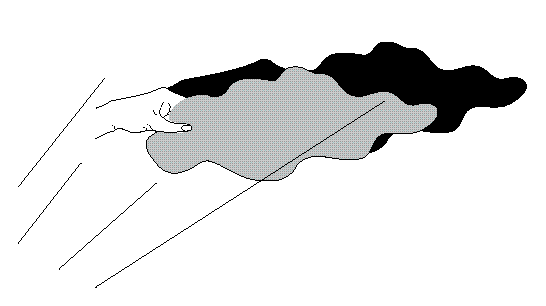
|
much of the infrared portion of the
electromagnetic spectrum. Since air's
capacity to hold moisture drops with
temperature, astronomers build infrared
telescopes on high mountain tops where the
air is much cooler and therefore drier than at
lower elevations. Infrared telescopes are
also carried on airplanes like NASA's
Gerard P. Kuiper Airborne Observatory from
which observations can be taken at altitudes
above 12,000 meters. Another good
location for viewing is Antarctica because of
its dry air. Telescopes in space gain an
even better view of infrared radiation. The second demonstration illustrates the effect of small water droplets on light passage. The third demonstration shows that clouds are very effective filters of visible light. |
For Further Research:
|
